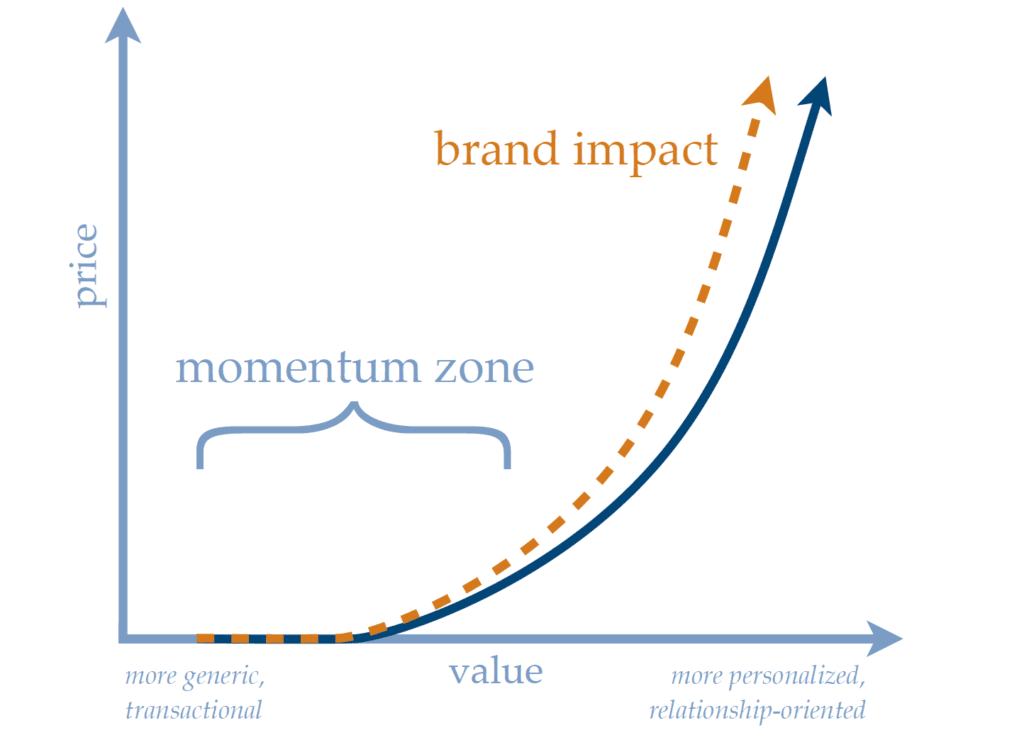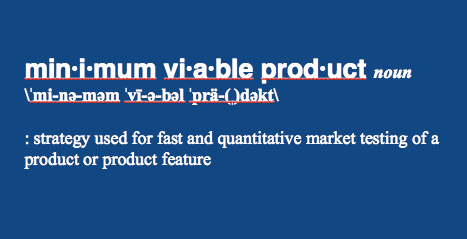Want to lead your learning business to significant growth? It pays to follow the lead of successful Internet marketers.
The term “Internet marketer” doesn’t mean just any old company or person who markets things online. Rather, it applies specifically to entrepreneurs who make their living – and in some cases make a fortune – primarily through marketing and selling effectively online. People like Jeff Walker, or Brendon Burchard, or Mari Smith.
Many Internet marketers sell only digital products and have no physical store or offices. Some don’t even have products of their own: they use affiliate programs to generate sales from other people’s products. Whatever their specific approach to running an online business, there is a core set of rules that all of the successful Internet marketers follow.
1. Value first
We talk about value often here at Leading Learning, and it is arguably the central focus of Leading the Learning Revolution. Successful Internet marketers understand that one of the only ways to get and hold a prospective customer’s attention these days is by offering something valuable up front.
Before any money changes hand.
Often before they even ask for an e-mail or any other identifying information.
And I mean real value. Practical, actionable, this-could-change-my-business/life-type stuff. The kind of stuff many prospects might actually be willing to pay for. While it may sound counter-intuitive, good Internet marketers recognize – and prove again and again – that it is often by giving away what seems like some of your best stuff, that you draw people in, establish authority and trust, and create much larger, longer-term revenue opportunities.
If your education enrollments are declining or you are struggling to grow them, “value first” is the first place I would look. Are you consistently publishing blog posts, white papers, podcasts, brief videos, or other forms of content that suggest the value of your organization’s educational offerings? You don’t have to do all of these things – even just doing one of them well, and consistently, can make all the difference.
(On a related note, be sure to see our content on the concept of the Value Ramp and how to get the most out of it.)

2. The money is in the list
E-mail comes in for a lot of criticism these days, but there is still no more effective way to sell on the Internet than by landing in someone’s inbox. We see this again and again when working with clients: e-mail remains by far the biggest driver of education sales (and direct mail, used less and less by many organizations, is right behind it).
E-mail remains by far the biggest driver of education sales
Building a substantial list of qualified prospects is the number one thing you can do when it comes to converting the value you offer into actual dollars. Indeed, most successful Internet marketers focus on building their list well before they actually have a finished product to sell.
How? See point #1 above: gaining enough trust to get you to hand over your e-mail is one of the key objectives of offering value first.
Of course, it’s not just about having a large list. Indeed, it’s not even mostly about having a large list. You want a list with the right people on it. People who understand and value what you are offering and who have given you permission to contact them about it.
And here’s a critical point: To a significant extent, people who have been automatically added to you e-mail list just because they paid membership dues don’t count. They haven’t really given you permission to market education to them, and they most likely have little real understanding of the value you offer.
If you are in position of already having a sizable list of people who may not truly be tuned into your value, then you need to segment it and go back to point #1 above: how can you provide substantial value based on the wants and needs of your most important segments? Focus on these segments to grow your business.
Finally, don’t leave list building to some other part of your organization. Understand what is involved, and force your way into a seat at the table if you must. For some great tips on list building see:
3. Teaching sells
If you are in the education business, then education is what you sell. But, of course, education itself is also a powerful selling tool.
Education-based marketing has been around for a long time, but the Internet has turned into an absolutely essential tool for all types of businesses. As a way to deliver value first (yet again, see #1 above), sharing useful knowledge with customers and showing them how to apply it really can’t be beat.
Ironically, we find that organizations that are in the education business are often really bad at this one. Randomly survey a handful organizations and you won’t even find free demo courses on many of their Web sites, much less other materials that could help educate the prospective member or customer. If there is free educational content available, if is often behind a member pay wall – not exactly the best way to make the organization’s authority and expertise obvious to new prospects.
As already suggested, establishing authority and expertise are essential to selling effectively these days, and providing useful educational content as part of the selling process is arguably the number one way to achieve this goal.
For some great additional insights and tips in this area, check out Social Media Examiner’s interview with John Jantsch of Duct Tape Marketing – one of the true pioneers of the “teaching sells” approach.
4. Testing teaches
One of the many reasons to put high-value educational content in front of your prospects is that it gives you a chance to test the market. What really resonates? What do people download, share, e-mail questions about? Knowing this can help tremendously with developing and honing your product strategy.
And there are many other ways in which Internet marketers test their markets. Running simple A/B split tests on e-mails and sales landing pages, for example, is standard operating procedure for all successful Internet marketers.
Even if you don’t have the responsibility or desire to get this technical, you need to make sure there are people in your organization who know how to run these sorts of tests and who are doing it. Any decent e-mail marketing software has A/B split test capabilities, and Google Analytics (free and already used by most organizations) provide free tools for split testing Web pages. If you don’t have staff comfortable with using these kinds of tools, there are plenty of freelancers on sites like Fiverr who can do the job.
And consider, also, the minimum viable product – a concept we have discussed in numerous blog posts and Webinars.
The idea is not to try to build the perfect product or event right out of the gate, but to get into the market with something good enough to please most of your customers. Then, get feedback and continue building from there.
For additional thoughts, see:
5. Emotion rules
This is an important point we make whenever we discuss the principles of pricing, and it applies broadly when thinking about business strategy. Value is about perception, and perception is very often driven more by emotion than logic.
Successful Internet marketers know how to weave themselves and their products into a story that resonates with the prospective buyer. They don’t sell products so much as they sell the outcomes: more freedom, self-sufficiency, better health – you get the picture.
Organizations often forget this point when they focus too much on the amount of credit that can be earned for a course, or “convenience,” or the “timeliness” of the information provided. While all of these may be benefits, they have little or no emotional pull (and, for that matter, they tend to be easy for competitors to replicate).
Figuring out an emotional connection can be tough – which is why, I suspect, it doesn’t happen all that often. You can make guesses about what matters to your learners, but the only way to be confident you have it right is to observe and listen. This is one of the few areas in which approaches like focus groups and interviews can have significant value. What stories do you hear people tell about training and education experiences? In what ways were they positively impacted?
At a minimum, this kind of feedback should be captured and communicated through written and video testimonials. Ideally, it should also resonate throughout all of the language you use when communicating about your offerings – which leads me to point #6…
6. Words matter
We all know that attention is a precious resource these days. Whether a prospect is surfing the Web, opening an envelope, or checking her inbox, you typically have a matter of seconds – or, in many cases, milliseconds – during which she will decide whether or not to pay attention to you. Your choice of words in that brief time can make the difference between starting a long-term relationship or simply racking up another “bounce” – the term used for when Web site visitors leave after having visited only one page.
Arguably even more important, once you have a prospect’s attention, you need to make it count. You need to convert. Here again, the words you use matter dramatically. How do you convey value (see #1) as rapidly and effectively as possible and convince the prospect to take action, whether that means actually making a purchase or simply signing up for an e-mail list (see #2).
Successful Internet markets recognize that they either need to master the skills of great copywriting, or they need to hire people who have already mastered those skills. For the second route, sites like Fiverr are, again, great resources.

Even if you go this route, though, I still highly recommend that you school yourself in the fundamentals of good copywriting as doing so will prepare you to deal more effectively with contractors. Two classic books that I consider essential are:
- Tested Advertising Methods by John Caples
- How to Write a Good Advertisement by Victor Schwab
While these two books are focused on advertising, the knowledge shared in them applies to copywriting broadly.
Also, check out the wealth of free and paid resources available through Copyblogger, a company that has built its business based on recognizing exactly how important good copywriting is these days. The Copywriting 101 articles are particularly helpful.
7. No process, no business
Finally, while you will find that many Internet marketers talk a lot about big product “launches,” the best of them are in it for the long haul and are intensely focused on building scalable, sustainable businesses. They tend to be masters of efficiency and are always looking for ways to grow revenue and profitability while minimizing labor.
They are forever creating repeatable formulas, processes, and systems that drive their businesses. Very often they share all or at least significant parts of these processes and systems. See, for example, John Jantsch’s Total Content System, which is free and offers great insight into how to consistently create and communicate the type of value discussed in item #1 in this list.
They know that creating content once (usually starting from video) and then leveraging the heck out of it (through editing, extracting audio, creating transcripts for print products, etc.) is one of the most powerful ways to scale a knowledge and education business. And, again, they have processes in place for doing this.
They bake continuous contact with customers into their systems and processes so that they are always tuned into what’s working and what’s not and what may represent the next big opportunity.
In short, they recognize that great products are only part of the equation. Without efficient, scalable processes, you really don’t have much of a business.
Applying Internet Marketing Rules in Context
So, those are the key rules that you will find pretty much any successful Internet marketer follows. It is important to note in closing, that they follow them consciously. Successful Internet marketers tend to be very clear about their overall strategy and very deliberate in how they proceed with executing that strategy. Strategy provides the context that makes the rules work.
If you need help with your strategic clarity, the many posts on strategy on the Leading Learning site can be a great starting point. Once you’ve got it, it would be hard to find a more effective set of rules to live by than those above.
Jeff
Photo credit: iqoncept / 123RF Stock Photo



Leave a Reply